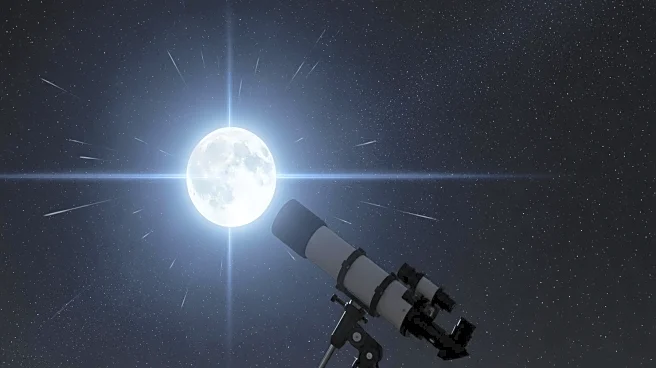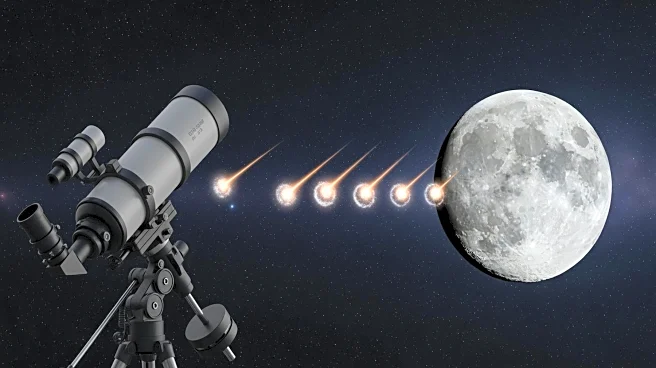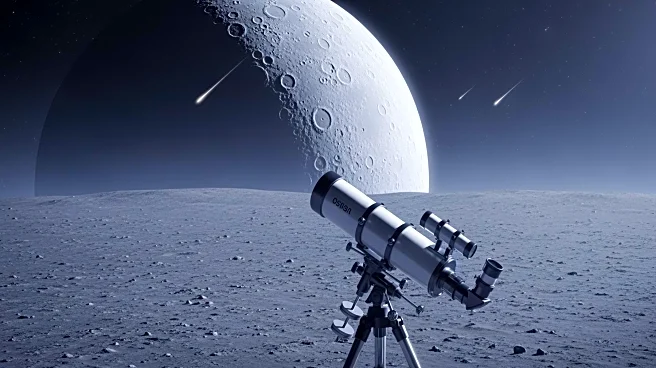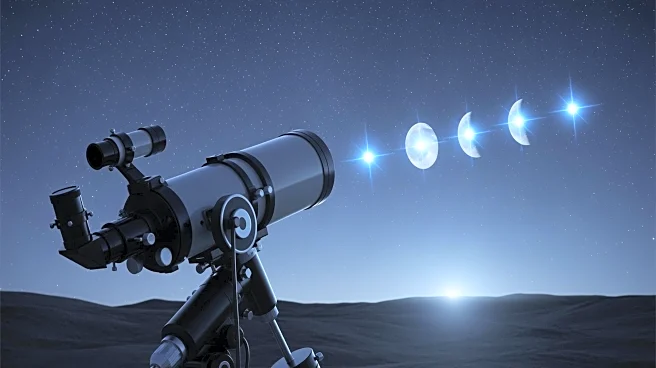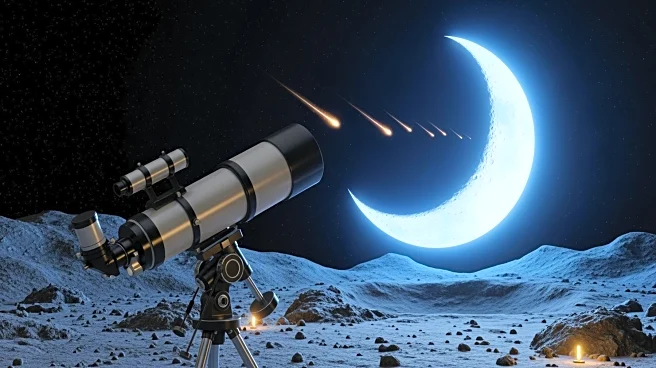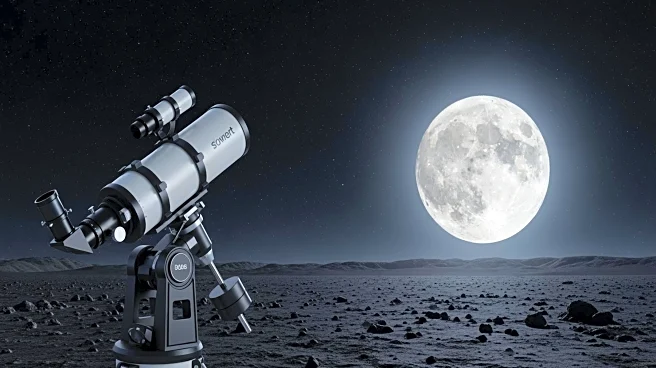What's Happening?
Two bright flashes were observed on the moon's surface, leading to speculation about their origin. Astronomer Daichi Fujii captured these flashes, believed to be caused by space rocks from the Taurid meteor
shower. The flashes were recorded on October 30 and November 1, with the prevailing theory suggesting they were high-velocity impacts. The Taurid meteor shower occurs annually, as Earth passes through debris left by comet Encke.
Why It's Important?
These observations provide valuable insights into lunar impacts and the behavior of meteors in space. The lack of atmosphere on the moon allows for direct observation of meteor impacts, which can inform scientific understanding of lunar geology and space phenomena. Additionally, the study of meteor showers like the Taurids can help predict potential risks to Earth, as larger fragments could pose threats in the future.
What's Next?
Further research may focus on monitoring meteor showers and their potential impacts on celestial bodies. Scientists could use this data to refine models predicting meteor behavior and assess risks to Earth. The findings may also encourage advancements in technology for observing and analyzing space events, contributing to broader scientific knowledge.
Beyond the Headlines
The study of lunar impacts and meteor showers has implications for space exploration and planetary defense. Understanding these phenomena can aid in developing strategies to protect Earth from potential meteor threats. It also highlights the importance of international collaboration in space research, as astronomers worldwide contribute to monitoring and analyzing cosmic events.



